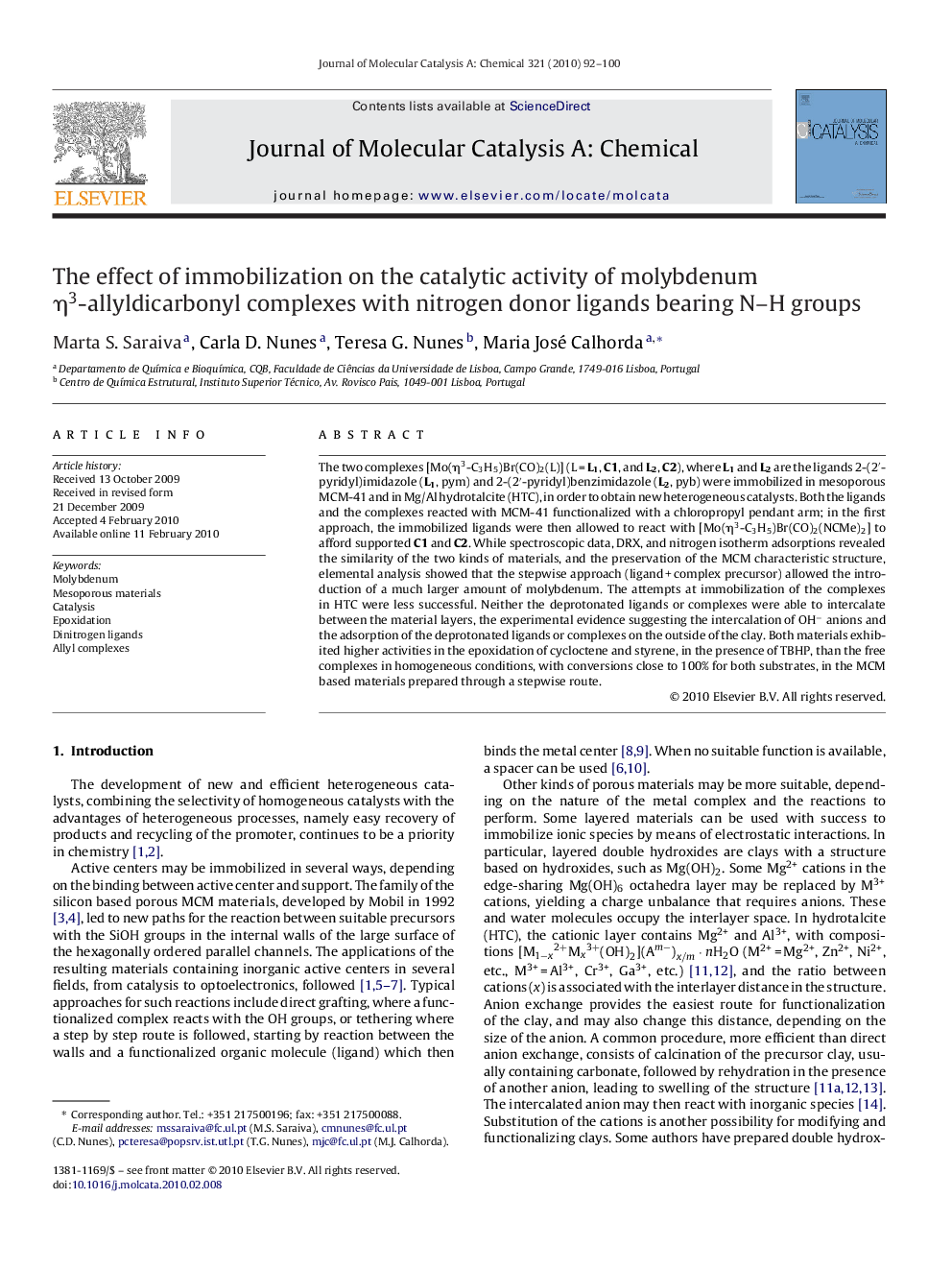| Article ID | Journal | Published Year | Pages | File Type |
|---|---|---|---|---|
| 66792 | Journal of Molecular Catalysis A: Chemical | 2010 | 9 Pages |
The two complexes [Mo(η3-C3H5)Br(CO)2(L)] (L = L1, C1, and L2, C2), where L1 and L2 are the ligands 2-(2′-pyridyl)imidazole (L1, pym) and 2-(2′-pyridyl)benzimidazole (L2, pyb) were immobilized in mesoporous MCM-41 and in Mg/Al hydrotalcite (HTC), in order to obtain new heterogeneous catalysts. Both the ligands and the complexes reacted with MCM-41 functionalized with a chloropropyl pendant arm; in the first approach, the immobilized ligands were then allowed to react with [Mo(η3-C3H5)Br(CO)2(NCMe)2] to afford supported C1 and C2. While spectroscopic data, DRX, and nitrogen isotherm adsorptions revealed the similarity of the two kinds of materials, and the preservation of the MCM characteristic structure, elemental analysis showed that the stepwise approach (ligand + complex precursor) allowed the introduction of a much larger amount of molybdenum. The attempts at immobilization of the complexes in HTC were less successful. Neither the deprotonated ligands or complexes were able to intercalate between the material layers, the experimental evidence suggesting the intercalation of OH− anions and the adsorption of the deprotonated ligands or complexes on the outside of the clay. Both materials exhibited higher activities in the epoxidation of cycloctene and styrene, in the presence of TBHP, than the free complexes in homogeneous conditions, with conversions close to 100% for both substrates, in the MCM based materials prepared through a stepwise route.
Graphical abstractDicarbonyl(allyl)molybdenum complexes with pyridylimidazole ligands can be successfully immobilized in MCM-41 previously functionalized with trimethoxychlorosilane and are more active as heterogeneous catalysts for the olefin epoxidation reaction than their homogeneous congeners.Figure optionsDownload full-size imageDownload high-quality image (99 K)Download as PowerPoint slide
